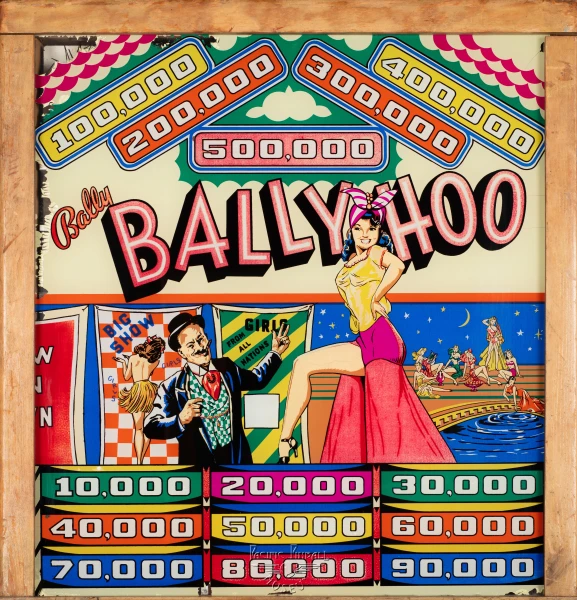Ballyhoo
Ballyhoo Preview Image

Machine Details
Manufacturer

Bally
Year
1932
Technology Era
Electro-Mechanical (EM)
Machine Description
Ballyhoo, released by Bally Manufacturing in 1932, stands as one of the most historically significant pinball machines ever produced, marking a pivotal moment in both pinball and American entertainment history. This machine was directly inspired by the popular Ballyhoo magazine of the era, and its success helped establish Bally as a major force in the coin-operated amusement industry during the Great Depression.
The machine's design was revolutionary for its time, featuring a colorful circus-themed playfield and incorporating the innovative 'pin and ball' gameplay that would eventually give the entire industry its name. Unlike modern pinball machines, Ballyhoo was purely mechanical, with players using a simple plunger to shoot steel balls onto a slanted wooden playfield studded with pins. The game's scoring system was basic by today's standards, but it established many of the fundamental concepts that would define pinball for decades to come.
Ballyhoo's cultural impact cannot be overstated. Released during the depths of the Great Depression, it provided affordable entertainment for millions of Americans and helped establish pinball as a legitimate form of public amusement. The machine's success led to the production of thousands of units, though exact numbers are difficult to verify due to the era's limited record-keeping. The game's popularity also helped legitimize the pinball industry at a time when many viewed mechanical games with suspicion.
Today, Ballyhoo is considered a holy grail among pinball collectors, with surviving examples commanding premium prices at auction. Its historical significance as one of the earliest successful pinball machines, combined with its connection to Depression-era American culture, makes it one of the most important artifacts in pinball history.